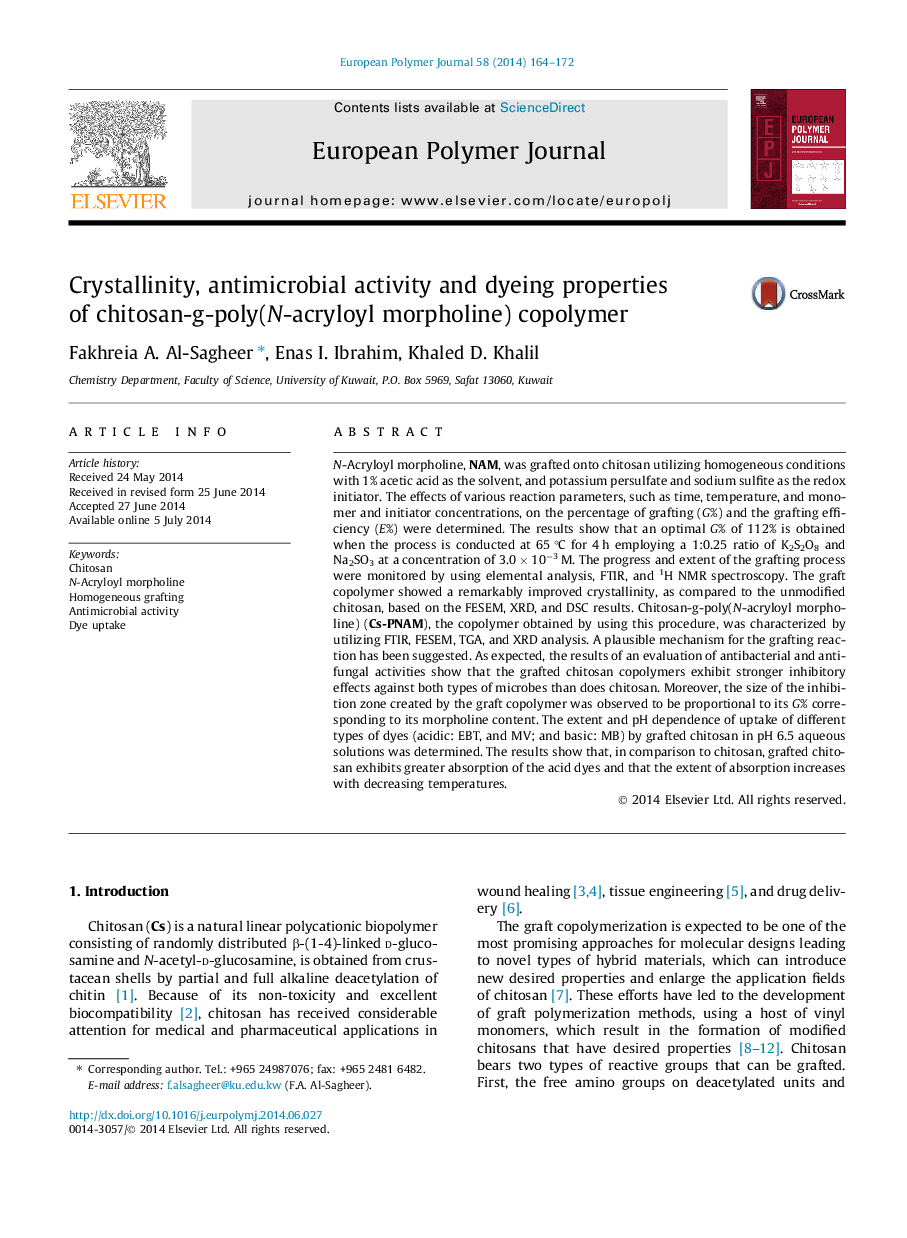| کد مقاله | کد نشریه | سال انتشار | مقاله انگلیسی | نسخه تمام متن |
|---|---|---|---|---|
| 1399353 | 1501377 | 2014 | 9 صفحه PDF | دانلود رایگان |

• Grafting of N-acryloyl morpholine onto chitosan under homogeneous conditions.
• Effects of various parameters on the G% and E% were investigated.
• SEM, XRD, and DSC are used to prove an improvement of crystallinity with grafting.
• Biological activity of chitosan graft showed growth inhibition to microorganisms.
• Improved dye uptake was approved towards acidic dyes as compared to basic ones.
N-Acryloyl morpholine, NAM, was grafted onto chitosan utilizing homogeneous conditions with 1% acetic acid as the solvent, and potassium persulfate and sodium sulfite as the redox initiator. The effects of various reaction parameters, such as time, temperature, and monomer and initiator concentrations, on the percentage of grafting (G%) and the grafting efficiency (E%) were determined. The results show that an optimal G% of 112% is obtained when the process is conducted at 65 °C for 4 h employing a 1:0.25 ratio of K2S2O8 and Na2SO3 at a concentration of 3.0 × 10−3 M. The progress and extent of the grafting process were monitored by using elemental analysis, FTIR, and 1H NMR spectroscopy. The graft copolymer showed a remarkably improved crystallinity, as compared to the unmodified chitosan, based on the FESEM, XRD, and DSC results. Chitosan-g-poly(N-acryloyl morpholine) (Cs-PNAM), the copolymer obtained by using this procedure, was characterized by utilizing FTIR, FESEM, TGA, and XRD analysis. A plausible mechanism for the grafting reaction has been suggested. As expected, the results of an evaluation of antibacterial and antifungal activities show that the grafted chitosan copolymers exhibit stronger inhibitory effects against both types of microbes than does chitosan. Moreover, the size of the inhibition zone created by the graft copolymer was observed to be proportional to its G% corresponding to its morpholine content. The extent and pH dependence of uptake of different types of dyes (acidic: EBT, and MV; and basic: MB) by grafted chitosan in pH 6.5 aqueous solutions was determined. The results show that, in comparison to chitosan, grafted chitosan exhibits greater absorption of the acid dyes and that the extent of absorption increases with decreasing temperatures.
Figure optionsDownload as PowerPoint slide
Journal: European Polymer Journal - Volume 58, September 2014, Pages 164–172